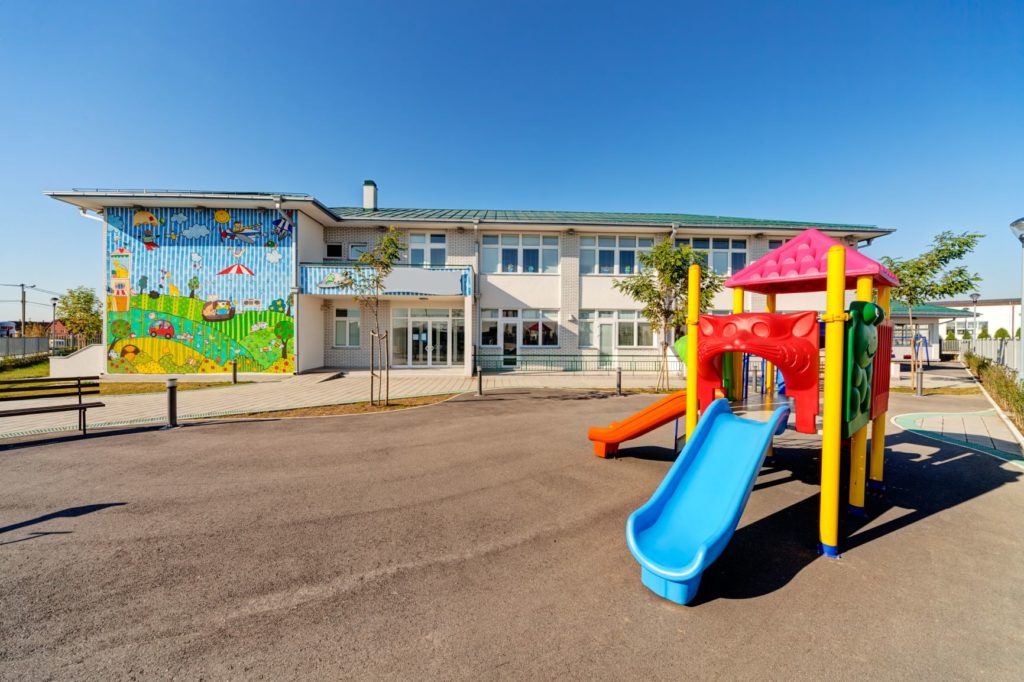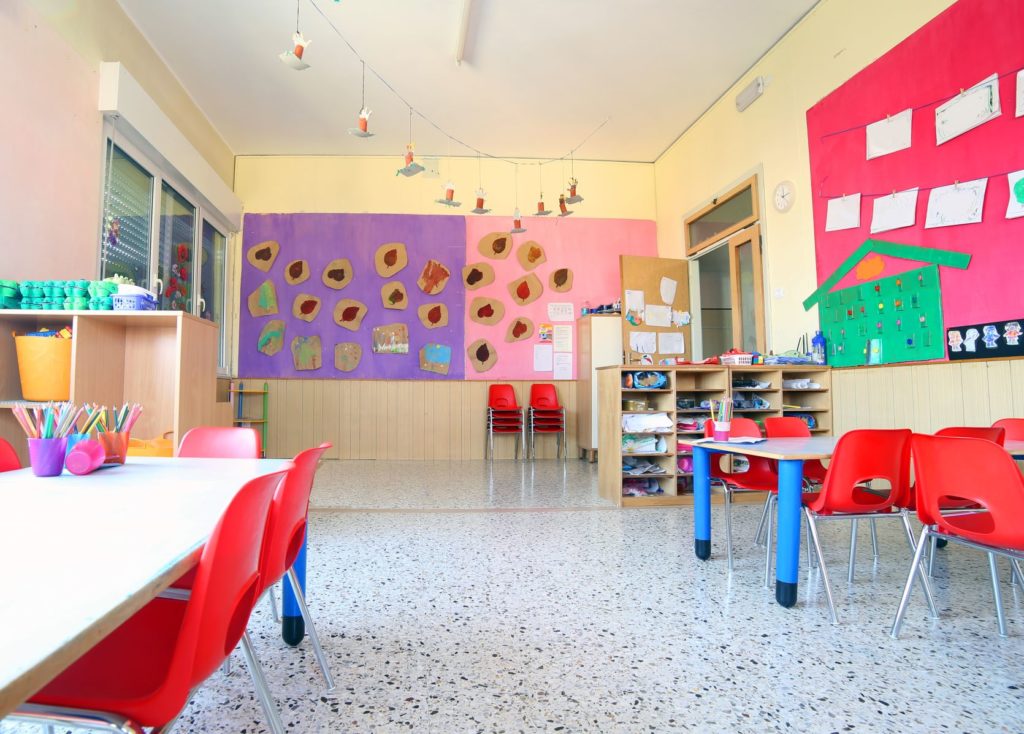
Children are remarkably sensitive to their environment, and thrive in spaces that support exploration and play. A well-designed and organized building creates a nurturing space for children to learn and grow. It facilitates the operations of your center and, above all, provides safety and security.
But what does optimal design for a child care facility look like? Read on to learn about the attributes of an optimal child care building, the importance of child care building design, the key elements of building design, and the outcomes you can expect when implementing design best practices.
What’s Considered Optimal When it Comes to Your Building?
An optimal child care building is one that serves the needs of everyone who uses it, including the children themselves, the staff, parents and members of the community. It should be safe, accessible, comforting, stimulating, well-organized and efficient.
Here’s what the Whole Building Design Guide identifies as key attributes to a well-designed child care facility:
- Accessibility: This involves compliance with all relevant accessibility regulations, including the Americans with Disabilities Act (ADA) and any local regulations. Shoot for a design that’s inclusive of the needs of both children and adults with disabilities, and provide equal play and learning opportunities for all children.
- Functional/Operational Spaces: Work to organize your center into functional areas such as classrooms, and furnish it with appropriate supplies. This includes outdoor spaces, which should feature various play areas with stimulating equipment.
- Productive Spaces: It’s important to make room for appropriate administrative space and materials for staff, and ideally on-site kitchen and laundry spaces.
- Safety & Security: Safety is an indispensable guiding principle of child care center design – especially these days. Some things to keep in mind: child care areas should not be directly accessible from the outside of the building. In addition, use security equipment, and make sure the building exterior is well-lit. Get more tips on safety and security at your child care center here.
- Sustainability: Minimize energy use, by leveraging natural light as much as possible. Make sure the materials you use are non-toxic and maintain good air quality throughout the facility
Why is Child Care Building Design Important?
Children often spend more time at the child care center than anywhere else but home, so the design of your building can have a big impact on their development. A well-planned child care center not only promotes the safety and well-being of children, but also your team.
It will guide children to play and explore while still allowing staff to move and work effectively. Sustainable choices in fixtures and furnishings will also maximize the budget of the center.
Great child care can’t happen just anywhere, but with wise choices and careful planning, your center’s building can become an inviting second home for students and staff alike.
Child Care Building Design: Optimizing Five Key Elements

Building Location
The ideal building location for a child care center is secure, accessible, properly sized and free of hazards, with ample outdoor space. Experts suggest that there should be between seven and 16 square feet of usable classroom space per child — less than that can cause conflict and create more opportunities for disruption. Outside, there should be about 22 square feet of space per child.
Choose a building that is close to main thoroughfares and public transit, but shielded from sources of noise (such as loud streets or highways) and dust or pollution. As we stated above, shoot for plenty of natural light, without the sun being crowded out by tall buildings or other obstructions.
For best check-in and check-out security, focus on having one main entryway that is accessible, well-lit, easy to observe and separated from classroom areas.
Make sure your outdoor area is free of hazards, and ideally offers visible points of interest nearby. Parking should accommodate both staff and parents.
Site, Yards and Outdoor Play Areas
Your center’s outdoor area should be an extension of its overall design, and integrated with the design principles of the classroom. Work to provide divided areas for age groups and a variety of natural features, terrain and equipment for dramatic and active play.
Infant and toddler areas are best fenced-off and comfortable with soft, resilient surfaces, and offer age-appropriate challenges like slight inclines for crawling. Older kids appreciate covered areas with seating to do homework, eat and socialize.
Natural features such as trees, shrubs and rocks can be a great way to divide areas and create interest. Ensure that the yard has sunny and shaded areas, and is easily accessible.
Make sure to watch out for potential safety hazards such as cracked paving or low-hanging branches that could allow children to climb over fences, and steer away from potentially unsafe toys like metal slides and see-saws. There should be a clear line of sight to all areas of the yard at all times.
Interior Spaces
Classroom design is at the heart of children’s experience at your center. Their learning is best supported by a classroom with a homelike feel, divided into distinct learning centers, with open floor space for active play and well-organized materials. Natural lighting is best for sustainability and an inviting classroom environment.
To avoid disruptions, separate the quiet play areas from active ones. Quiet areas are best suited to:
- low ceilings
- soft light
- comfortable surfaces
- subdued colors
- dampened acoustics
On the other end, active areas can have high ceilings, bright light, resilient surfaces, bright colors and amplified acoustics.
Unobstructed movement through the room should always be possible for accessibility and safety. Staff should have clear visibility of each child in the room.
Outside of the classroom, make sure there is a comfortable reception area for parents with access to the staff restroom. A multipurpose space is also good to include for meetings and gatherings, and active play during inclement weather.
Furnishings & Equipment
Carefully choosing and arranging furnishings and equipment will help you create a space that is both structured and flexible, where children can choose their own activities and be rewarded for their efforts.
Make sure learning centers are clearly marked and well-organized, with adequate storage space at child height to allow kids to retrieve and tidy their play materials. Equipment at learning centers can include:
- props and clothes for dramatic play
- blocks
- art supplies
- books
- paper and writing instruments
- sand tables and other tactile activities
Attractive but easy-to-clean materials are best for toys and furniture. Colors and textures provide visual interest, but try to avoid harsh colors. Soft mats in the floor area provide comfort and prevent injuries during active play.
Make adult-scale furniture available to allow for staff use and adult-child interaction. Children should have labeled personal storage cubbies with nearby seating to allow for easy dressing.
For safety, make sure all of your equipment is free of choking hazards and other dangers, and that each room has adequate fire safety equipment.
Interior Finishings
When installing interior finishings and fixtures, think about what should be at child height and accessible, and what should be out of reach of children. Counters and other fixtures for child use should be at an appropriate height and depth for kids to use unassisted. Door locks, light switches, fire alarms, plumbing and food preparation equipment should be out of reach and/or out of view.
Natural light is always best, including skylights in hallways, but a variety of no-glare, full-spectrum light sources are also beneficial. Fans improve air circulation and ventilation.
In corridors, think about rounding off the corners at intersections. This has a number of safety and accessibility benefits, such as:
- Improved visibility prevents collisions and aids navigation
- Minimized injury potential if a child runs into a corner
- Larger intersection allows easier maneuvering of carts and strollers
Don’t forget to provide display space on walls in classrooms and hallways to allow children to hang up their artwork and other projects – this is what gives your facility personality.
How Does Building Design Impact Your Child Care Operation?

A harmoniously designed and organized child care center makes every aspect of your child care operation easier and more effective. You can optimize learning and behavioral outcomes, parent engagement, maintenance, administration and budget when your center is mindfully laid out for your needs.
The benefits are clear:
- The center will be safer, with fewer hazards and easier supervision.
- Children will gain more independence to guide their own activities.
- Classrooms will facilitate more learning and more fun.
- Parents will feel welcomed and staff will have distraction-free spaces to work.
- Sustainable choices save money and energy.
- Your center will reflect your values and educational philosophy, as well as providing an inclusive environment with opportunities for everyone.
Optimize Your Child Care Business with Procare Solutions

Procare Solutions streamlines and automates daily operational tasks so you can make the most of your child care space. For over 30 years, child care centers of all sizes have trusted Procare to help make providing great child care efficient and hassle-free.
With Procare, you’ll be able to complement your thoughtful child care building design with process-enhancing features like:
- Contactless check-in and check-out to help reduce congestion and foot traffic in child care spaces.
- Real-time staff-to-child ratio monitoring for all child care rooms.
- Child care security equipment, including keyless entry, interior door control, and biometric fingerprint systems.
Curious about how Procare Solutions can help you streamline child care operations and make the most of your child care space?
Request a Demo
Request a demo and talk with one of our friendly Procare experts to get a tailored child care solution for the unique needs of your business.




